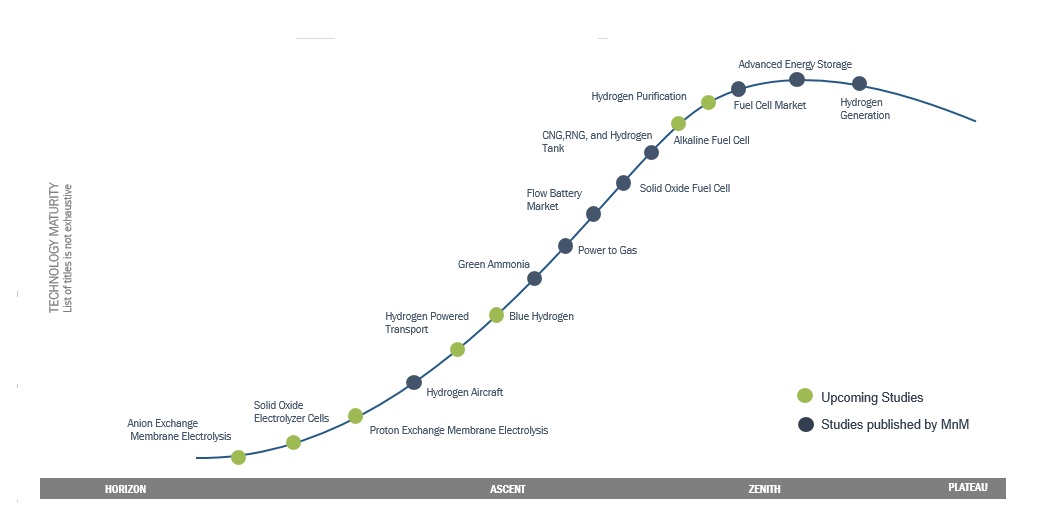Hydrogen is a key energy carrier in the envisaged Hydrogen Future. Future energy systems will find hydrogen to be a beneficial component due to its many advantages. It is a flexible, clean energy source. Download – https://www.marketsandmarkets.com/industry-practice/RequestForm.asp
These key elements emphasize the significance of hydrogen as an energy carrier.
1. Energy Storage and Flexibility: Hydrogen enables efficient energy transportation and storage. A range of resources, including renewable energy, can be used to make it through processes like electrolysis. When needed, the stored hydrogen can be used, giving flexibility to meet fluctuating energy demands and maintain a balance with intermittent renewable energy sources.
2. Clean and Sustainable Energy: Hydrogen is a sustainable and clean energy source. When hydrogen is produced using renewable energy sources, such as solar or wind power, it generates “green hydrogen,” or hydrogen with no greenhouse gas emissions. Green hydrogen has the capacity to replace fossil fuels in a number of sectors, including manufacturing, transportation, and energy generation. This would have a big effect on reducing emissions and combating climate change.
3. Versatility and Sector Integration: Hydrogen has remarkable versatility across an array of industries. It is useful in fuel cells to produce power for transportation, stationary, and portable applications. Hydrogen is also an acceptable substitute for fossil fuels as a feedstock and heat source in industrial processes. By storing energy and maintaining system balance, hydrogen can also help in the production of electricity.
4. Decarbonization Potential: Decarbonization holds great promise for the future of hydrogen. When hydrogen replaces fossil fuels in various applications, it has the potential to significantly reduce greenhouse gas emissions and air pollution. It makes the transition to a low-carbon economy easier and aids in the achievement of aggressive climate targets.
5. Technological Advancements and Cost Reduction: As hydrogen technologies, like fuel cells and electrolysis, continue to advance and economies of scale are achieved, costs are falling. With the advancement and economic viability of these technologies, it is expected that the cost of creating, storing, and consuming hydrogen would decrease even more. This cost reduction, along with incentives like investments and laws, will make it easier to employ hydrogen as an energy carrier on a large scale later on.
Hydrogen Value Chain
The “Hydrogen Value Chain” refers to the procedures involved in creating, delivering, and utilizing hydrogen as a fuel. Hydrogen has gained a lot of attention as a possible clean and sustainable energy source, especially for sectors like manufacturing, transportation, and power generation.
The following steps usually make up the hydrogen value chain:
1. Hydrogen Production:
a. Natural Gas Reforming (Steam Methane Reforming, SMR): This method produces hydrogen and carbon dioxide chemically from natural gas.
b. Electrolysis: Hydrogen and oxygen molecules in water are separated using electrolysis. It can use renewable energy sources to produce green hydrogen.
c. Biomass Gasification: Hydrogen may be produced from biomass through a process called gasification.
d. Thermochemical Water Splitting: Biomass can be converted into hydrogen through a process called gasification.
e. Hydrogen Purification and Compression: Hydrogen must often be compressed and filtered after it is produced in order to fulfill quality and pressure standards for various applications.
2. Hydrogen Storage: Hydrogen, whether in its gaseous, liquid, or solid state, is typically stored to ensure its availability for use when required. Typical storage methods include chemical hydrides, cryogenic storage, and high-pressure containers.
3. Hydrogen Transportation: It may be essential to transport hydrogen from the places where it is produced to the ultimate customers. Depending on the required amount and distance, pipelines, cars, or ships can achieve this.
4. Hydrogen Distribution: The provision of hydrogen to end users requires distribution infrastructure. This could involve constructing a network of hydrogen filling stations for automobiles or pipes for industrial clients.
5. Hydrogen Utilization: There are a lot of uses for hydrogen, including:
a. Transportation: Fuel cell vehicles (FCVs) and hydrogen-powered trucks, buses, and trains.
b. Industry: Hydrogen is used in many industrial processes, such as the synthesis of metals, chemicals, and refinement.
6. Power Generation: Hydrogen can be used by fuel cells to generate energy, acting as both a stationary power plant and a backup power source.
7. Residential and Commercial Heating: Hydrogen is a useful fuel for heating and cooking in both homes and commercial buildings.
8. Emissions Reduction: The primary advantage of hydrogen is its capacity to reduce greenhouse gas emissions; this is especially true when hydrogen is created using green hydrogen, or hydrogen sourced from renewable energy sources. Fossil fuels are being substituted in many applications to help slow down the effects of climate change.
9. Hydrogen Recycling and Reuse: The concept of a circular hydrogen economy holds that hydrogen is a sustainable energy source when it is recycled and reused. Recycling and gathering hydrogen can help lower value chain losses.
10. Research and Development: Ongoing research and development is required to improve the efficiency, affordability, and safety of hydrogen generation, storage, and utilization systems.
The development of the hydrogen value chain is a consequence of ongoing scientific discoveries, policies, and financial support aimed at extending the long-term usage of hydrogen for sustainable energy. A multitude of factors can influence the selection of hydrogen production methods and the overall configuration of the value chain, such as regional energy regulations, environmental goals, and the availability of resources.
Read More – https://www.marketsandmarkets.com/industry-practice/hydrogen/Hydrogen_Page.asp


